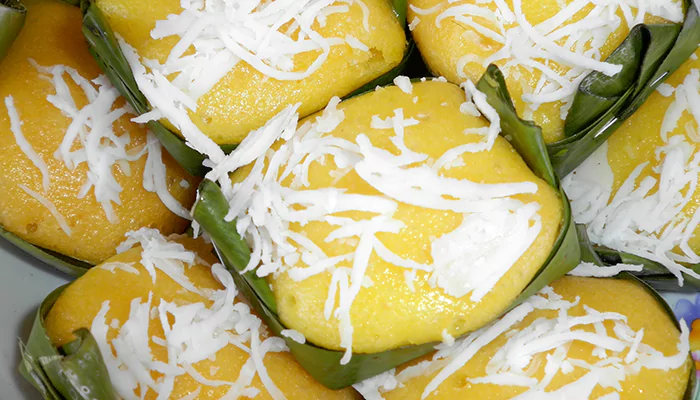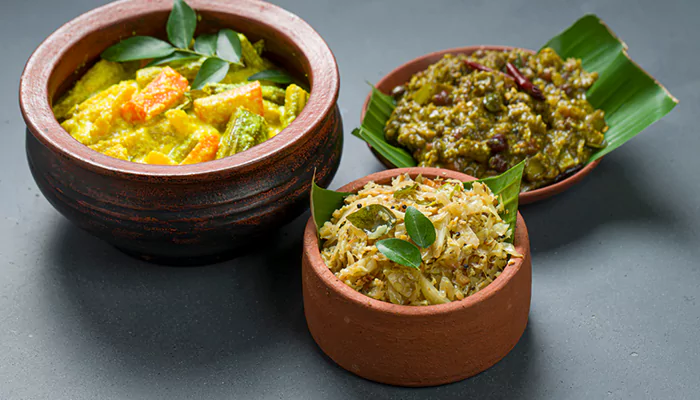Wanna try cooking in a banana leaf ? Here are a few useful tips
The natural way to lock in taste that you’ll love
- Sanjukta
- 12 March, 2025
- 2 mins ago

Wanna try cooking in a banana leaf ? Here are a few useful tips
The natural way to lock in taste that you’ll love
Cooking with banana leaves might sound exotic, but it’s a centuries-old practice in many parts of the world. Originally native to Southeast Asia, banana trees have spread across the globe, from Africa to the Caribbean and South America. Today, wherever banana trees flourish, their leaves find their way into kitchens. While you don’t actually eat the leaves themselves, they play a key role in wrapping, baking, roasting, and steaming food. The result? A delightful, subtly sweet, and slightly grassy aroma giving the dish a flavor that’s hard to get any other way.
Many ways to use banana leaf in cooking
Baking with banana leaves

Using banana leaves in baking adds a unique touch to your dishes. When wrapped in these leaves, baked goods turn out extra moist, and the gentle banana fragrance adds depth to the flavor. The natural properties of banana leaves help retain moisture, ensuring your cakes or breads stay soft and tender. If you’re looking for a tropical twist to your baking, banana leaves are a great way to start.
Roasting in banana leaves
Roasting food wrapped in banana leaves locks in moisture and flavors, creating a beautifully tender result. Whether it’s meat or fish, banana leaves act as a natural cooking pouch, allowing the food to gently steam while roasting. This method keeps the meat juicy and adds a subtle earthiness.
Steaming with banana leaves
Steaming with banana leaves is a popular cooking technique in many parts of the world. The leaves provide a natural barrier that traps steam, allowing dishes to cook evenly while absorbing the delicate fragrance of the leaf and results in the food being soft and tender.
Use Banana Leaves as a Serving Plate

After cooking, you don’t need to unwrap the food right away. Banana leaves make a fantastic serving plate. They add a rustic, eco-friendly vibe to the meal and keep everything warm and fragrant until you’re ready to dig in.
In a world of modern kitchen tools, cooking with banana leaves brings a sense of simplicity and connection to nature. The process of wrapping and unveiling a dish cooked in these leaves feels timeless and rewarding. They’re a sustainable and flavorful way to prepare meals, reminding us that sometimes the simplest ingredients can create the most satisfying results.
Cooking with banana leaves can be a bit of an adventure, but once you get the hang of it, they’re a total game-changer. Here are some handy tips to make the most of them in your kitchen:
Prep the leaves beforehand
Banana leaves are sturdy, but they can be a bit stiff at first. To make them easier to handle, gently pass them over an open flame or hot pan for a few seconds. This softens the leaves, making them more pliable and less likely to tear when you wrap food.
Clean them well
Even though banana leaves come from nature, they can pick up dirt and dust. Give them a quick rinse under cold water and pat them dry before using. You want to ensure the surface is clean before wrapping your food.
Use string or toothpicks to secure the wraps
When wrapping food in banana leaves, you’ll need to secure them to keep everything in place. Use kitchen string, toothpicks, or even strips of the leaf itself to tie the bundles securely. This ensures your food stays snug and cooks evenly.
Double up for extra protection
Banana leaves can sometimes tear during cooking, especially when steaming or roasting. To avoid leaks, consider using two layers of leaves. This adds extra strength and keeps all those delicious flavors sealed in.
Don’t worry about exact sizes
Banana leaves are pretty flexible when it comes to wrapping food. You don’t need to cut them into perfect sizes. Just tear or cut off a piece big enough to cover your food, and you’re good to go!
Freeze leftover leaves
Got leftover banana leaves? No problem! You can freeze them for future use. Just make sure they’re dry, and store them flat in an airtight bag. When you're ready to use them again, thaw them out and gently reheat over a flame or warm water.










